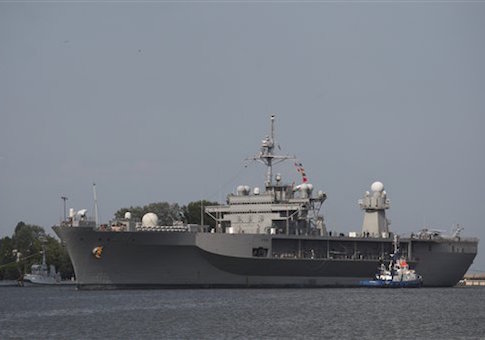The U.S. Navy needs a much larger fleet to defend America's interests while countering China's growing capabilities and a resurgent Russia, according to a new assessment released by the service.
The Navy should have a fleet of 355 ships to counter potential adversaries of the United States, according to the 2016 Force Structure Assessment, a study begun in January to evaluate the long-term defense security requirements for future naval forces.
The evaluation recommends that the Navy grow its fleet to have 12 aircraft carriers, 104 large surface combatants, 52 small surface combatants, 38 amphibious ships, and 66 submarines.
The assessment, which was released on Friday, replaces the 2012 Force Structure Assessment, which was updated two years ago.
According to the summary of the new evaluation, "the global security environment changed significantly [since 2014], with our potential adversaries developing capabilities that undermine our traditional military strengths and erode our technological advantage."
"Within this new security environment, defense planning guidance directed that the capacity and capability of the Joint Force must be sufficient to defeat one adversary while denying the objectives of a second adversary," according to the assessment.
The evaluation was released as China held its first live-drills with a new aircraft carrier, warships, and fighter jets in the Bohai Sea near Korea. Both China and Russia have been investing in new technologies and military capabilities, as the U.S. military has been forced to forgo some modernization efforts to prioritize current readiness amid budget constraints.
Outgoing Navy Secretary Ray Mabus singled out China and Russia as potential adversaries when addressing the release of the assessment.
"To continue to protect America and defend our strategic interests around the world, all while continuing the counter terrorism fight and appropriately competing with a growing China and resurgent Russia, our Navy must continue to grow," Mabus said in a statement Friday. "All of the analysis done to date, inside and outside of the Navy, recognizes, as we have for nearly the last eight years, the need for a larger fleet."
In total, the new assessment adds 47 ships to the 308-ship fleet recommended in 2014.
President-elect Trump unveiled his plan to boost defense spending and rebuild the military in September, calling for bolstering the Navy's fleet to 350 ships. The president-elect has similarly said he will add to the forces of the Army and Marine Corps and increase the Air Force's warplanes.
The latest assessment recommends that the Navy grow the number of aircraft carriers from 11 to 12, large surface combatants from 88 to 104, amphibious warfare ships from 34 to 38, attack submarines from 48 to 66, the combat logistics force from 29 to 32, the expeditionary support base from 3 to 6, and the command and support inventory from 21 to 23. The count of small surface combatants would remain at 52, expeditionary fast transport and high speech transport at 10, and ballistic missile submarines at 12.
"It should not be assumed that this force level is the 'desired' force size the Navy would pursue if resources were not a constraint—rather, this is the level that balances an acceptable level of warfighting risk to our equipment and personnel against available resources and achieves a force size that can reasonably achieve success," the summary states.
The assessment was not constrained by funding levels associated with the 2011 Budget Control Act, which has eroded the defense budget and is projected to cut nearly $500 billion from the Pentagon's spending over 10 years. Sequestration, which Trump has indicated he will end, has further reduced defense spending and compromised readiness and modernization efforts.
The assessment will go into developing the Navy's fiscal year 2018 30-year shipbuilding plan.
It is unclear who will become Navy secretary under the Trump administration. Randy Forbes, the Republican representative from Virginia who lost his congressional seat in a primary race last year, is rumored to be the favorite to lead the Navy and Marine Corps.
